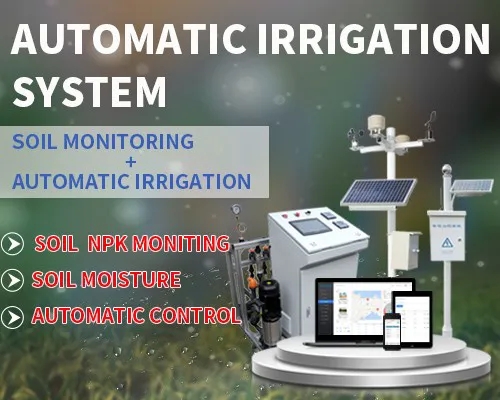Agriculture and Forestry Smart Irrigation System Solution
Overview:
The agricultural and forestry irrigation control system is mainly composed of the central main control system (server, management platform), solenoid valve, soil moisture sensor (measurable absolute value of soil moisture), meteorological observation station (measurable temperature, humidity, wind speed, wind direction, rainfall), etc. The equipment is composed. Operators can sit in the control room and perform comprehensive analysis on the collected meteorological data, field soil moisture and other data, using manual or automatic methods to irrigate the entire irrigation area without leaving home. At the same time, you can also use the data query system and printing system to record, query, and print the meteorological data, soil moisture, irrigation settings, irrigation progress, irrigation history and other data of the entire irrigation district at any time. This system is composed of multiple control units, each of which manages an area. They are all managed by the control platform through the wireless 3G/4G network. The sensing equipment in the agricultural and forestry area transmits the current agricultural and forestry status to the management platform, and sets the irrigation parameters on the platform, and performs statistics on the irrigation situation, and can be stored on the computer through special software to display data and graphs. At the same time, special operations can be performed manually. The platform can obtain weather information through the Internet, so that irrigation can be implemented predictably, and the irrigation area can be managed scientifically and efficiently.

System functions
Perception layer data visualization: Use sensors to collect crop information such as soil temperature, humidity, sunshine, and heat, and upload it to the management platform to turn it into visual data. Through the interpretation and analysis of the data, the crops can be irrigated regularly, quantitatively and accurately. It solves the inaccuracy of traditional farmland irrigation relying on experience judgment.
Irrigation system automation: The smart farmland irrigation system integrates sensor technology, automatic control, wireless communication and other technologies, and realizes remote timing and quantitative irrigation by controlling the opening/closing of the solenoid valve of the irrigation system. Even in unattended situations, water use can be accurately controlled, saving manpower and water resources costs.
Long-distance transmission, ultra-low power consumption: the sensor’s own battery can last for 1-3 years; the NB-IoT gateway has a signal coverage of 5-10 kilometers, supports multiple sensor data upload, and can enter sleep mode when not in use, and farmland management Avoid the trouble of frequent battery replacement.
Energy saving and production increase: The cost of an automated irrigation system is similar to that of a traditional irrigation system, but it can save water by 16% to 30%. The crops are accurately irrigated to obtain the best growing conditions, helping the farmland owners to maximize their profits.
The intelligent irrigation system realizes the unification of multiple irrigation control methods and functions. The intelligent agricultural and forestry irrigation system can not only improve resource utilization, alleviate the contradiction of increasingly tense water resources, save labor costs, but also entrust security to reduce agricultural and forestry products. the cost of. The system can automatically irrigate the forest area after systematic analysis of the current agricultural and forestry information platform collected by the on-site sensors. During the irrigation process, the soil information will also be collected in real time. If the specified value is reached, the irrigation will be stopped. The system can intelligently determine the forest. In order to achieve reasonable utilization of my country’s water resources, it also greatly reduces the workload of forest management personnel.





